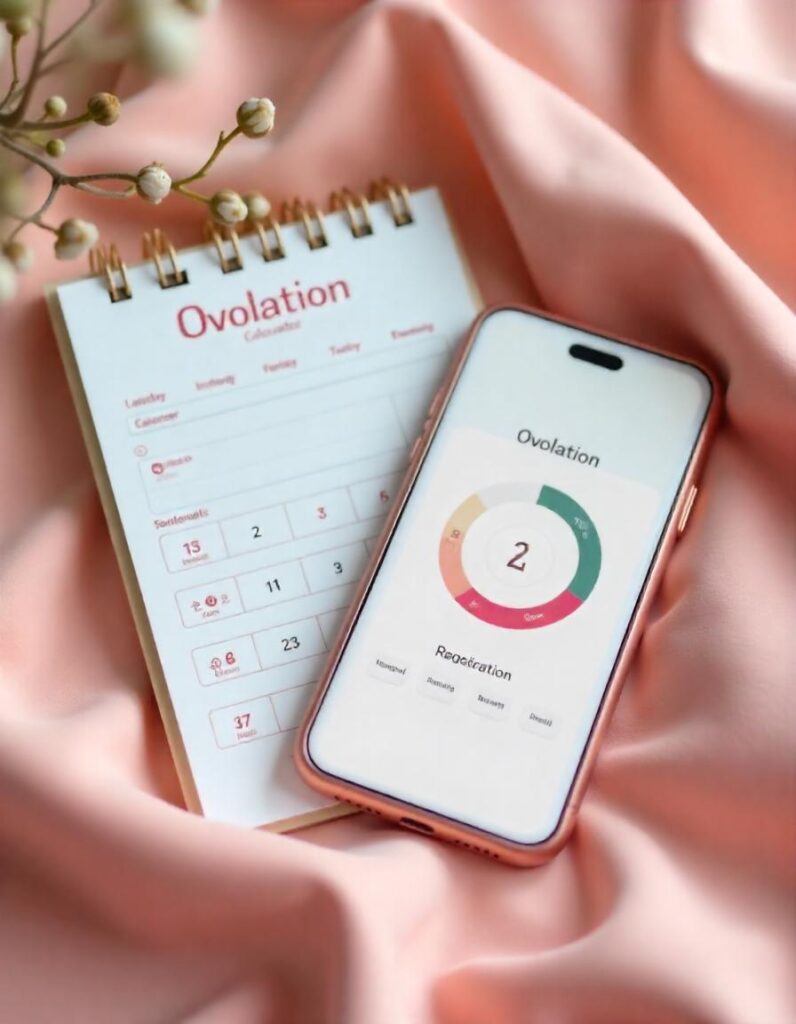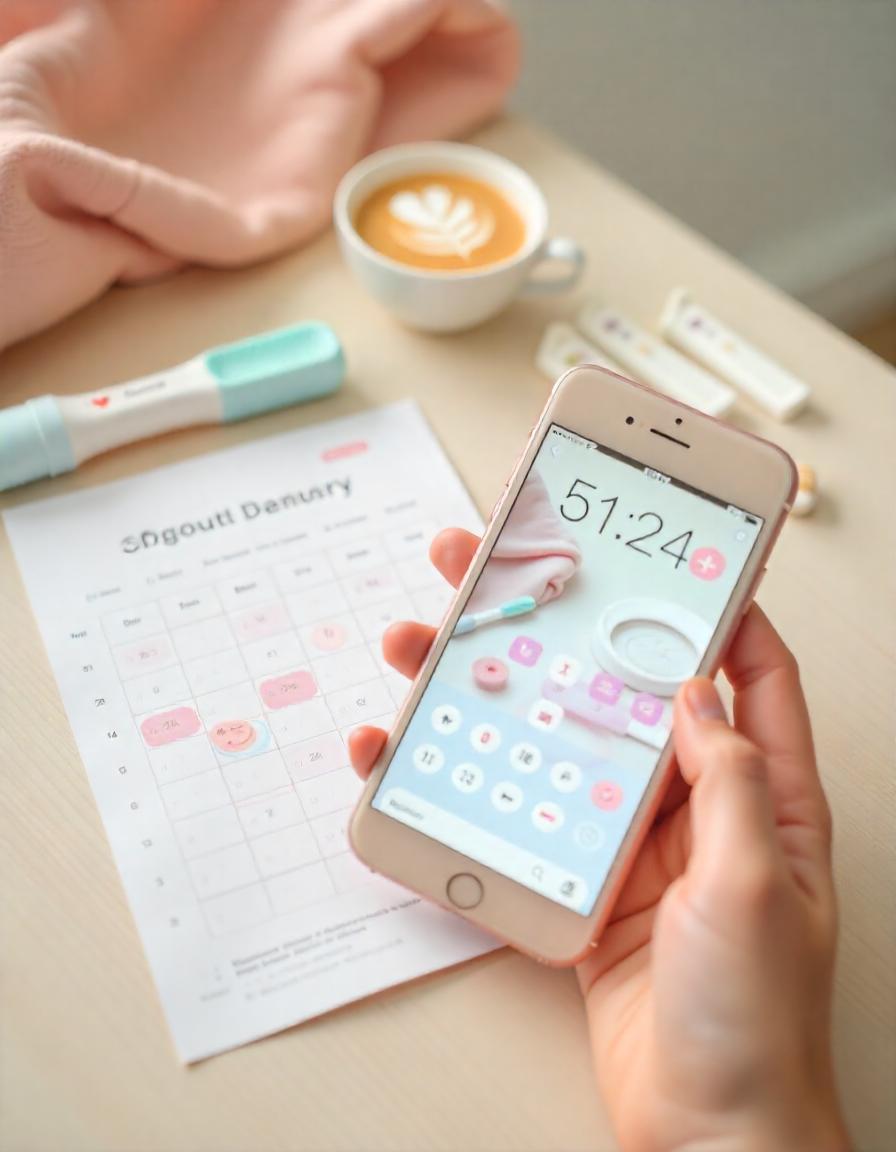Ovulation Calculator
Find your fertile days by entering your last menstrual period and cycle length.
Learn how to use an ovulation calculator for accurate fertility tracking and conception planning.
Ovulation Calculator: Track Your Fertility Window
Introduction: What is Ovulation?

Ovulation is a key part of the menstrual cycle, and understanding it is crucial for anyone trying to conceive or simply learning about their reproductive health. It’s that time each month when an egg is released from the ovary, ready for fertilization. Knowing when ovulation occurs can significantly improve your chances of conception. But how do you know when it’s happening? That’s where an ovulation calculator comes in handy.
In this article, we’ll break down the basics of ovulation, explain how to calculate your ovulation window, and discuss the importance of ovulation calculators in reproductive health.
Understanding the Ovulation Cycle
The menstrual cycle is typically about 28 days, though it can vary from person to person. Ovulation usually occurs about 14 days before the start of the next period. However, many factors like stress, diet, or health conditions can influence the timing of ovulation.
A regular cycle involves several stages:
- Follicular Phase (Day 1 to Ovulation): The body prepares an egg for release.
- Ovulation (Around Day 14): The egg is released and travels down the fallopian tube.
- Luteal Phase (Post-Ovulation to Period): If the egg isn’t fertilized, it dissolves, and menstruation begins.
Knowing when ovulation happens within this cycle helps you understand your most fertile days, making ovulation tracking essential.
The Science of Ovulation: How It Works
Ovulation is controlled by hormones that coordinate with your ovaries and uterus. The key hormones involved are:
- Follicle-Stimulating Hormone (FSH): Stimulates follicle growth in the ovaries.
- Luteinizing Hormone (LH): Triggers ovulation by releasing the mature egg from the ovary.
- Estrogen: Prepares the body for ovulation and fertilization.
- Progesterone: Increases after ovulation to prepare the uterus for a possible pregnancy.
This hormonal shift helps prepare the egg for fertilization and signals the optimal time for conception.
Why Ovulation is Important

Ovulation is central to conception. It’s the only time during the menstrual cycle when a woman can become pregnant. Understanding ovulation also helps in the prevention of unwanted pregnancies for those not trying to conceive. By tracking ovulation, individuals can make informed decisions about when to try for a baby or use contraception.
Signs of Ovulation: What to Look For
Your body gives several clues when ovulation is about to happen. These signs include:
- Increased cervical mucus: Clear, slippery mucus resembling egg whites.
- Change in basal body temperature (BBT): A slight increase in temperature after ovulation.
- Ovulation pain (mittelschmerz): Some women feel mild pain or cramping on one side of the lower abdomen.
- Breast tenderness: Hormonal changes can cause sensitivity.
- Increased libido: A natural instinct to increase chances of reproduction.
Tracking these signs can help identify the ovulation window without using a calculator.
The Role of Hormones in Ovulation
Hormones are the master controllers of ovulation. They regulate everything from follicle development to the release of the egg and even the potential for pregnancy. Hormonal imbalances can affect ovulation, leading to issues such as irregular cycles, difficulty conceiving, or missed periods.
How to Calculate Your Ovulation Window
The ovulation window is typically 5-6 days long, including the 4-5 days leading up to ovulation and the day of ovulation itself. To calculate it, you need to know:
- The length of your menstrual cycle (from the first day of your period to the first day of your next period).
- The average length of your luteal phase (usually 14 days, but can vary).
Subtracting 14 days from the length of your cycle will give you an approximate day of ovulation. For example, if you have a 28-day cycle, ovulation will likely occur on day 14.
What is an Ovulation Calculator?
An ovulation calculator is a tool that helps predict the most fertile days of your cycle based on the length of your menstrual cycle. It’s a quick and easy way to estimate ovulation without needing to track every little sign. By entering your cycle information, an ovulation calculator can give you a predicted window for conception.
How to Use an Ovulation Calculator

Using an ovulation calculator is simple. Here’s how:
- Enter your cycle length: Most calculators will ask for the average length of your cycle.
- Provide your last period start date: Some calculators also ask for the start date of your last period.
- Get your result: The calculator will estimate the best days for conception based on your input.
Most calculators can also factor in irregular cycles, though they may not be as accurate in those cases.
Factors Affecting Ovulation and Fertility
Several factors can impact ovulation and fertility, including:
- Age: Fertility naturally declines as you age, especially after 35.
- Stress: High stress can interfere with hormone production.
- Diet and Exercise: A healthy diet and moderate exercise promote regular cycles.
- Health conditions: Disorders like polycystic ovary syndrome (PCOS) or thyroid problems can affect ovulation.
Keeping track of these factors can help improve the accuracy of ovulation prediction.
The Benefits of Using an Ovulation Calculator
An ovulation calculator can help in several ways:
- Timing for conception: It helps couples plan intercourse during the most fertile window.
- Monitoring reproductive health: Regular use can help identify irregular cycles.
- Understanding your body: You’ll become more in tune with your body’s rhythms and signs.
Ovulation Calculator for Conception
For couples trying to conceive, the timing of intercourse is key. An ovulation calculator allows couples to pinpoint the most fertile days, improving the chances of pregnancy. It’s especially helpful for those who may not experience noticeable physical signs of ovulation.
Common Myths About Ovulation

There are many myths surrounding ovulation. Let’s debunk a few:
- Ovulation always occurs on day 14: Ovulation can happen earlier or later, depending on your cycle.
- You can only get pregnant during ovulation: Sperm can live inside the body for up to 5 days, so you can conceive if you have intercourse before ovulation.
- Irregular cycles mean you can’t track ovulation: While it’s harder, irregular cycles can still be tracked using ovulation calculators and other methods.
How Accurate are Ovulation Calculators?
Ovulation calculators are generally accurate for those with regular cycles. However, for people with irregular cycles, the predictions may not always be perfect. For greater accuracy, consider combining an ovulation calculator with other methods, such as tracking basal body temperature or using ovulation predictor kits (OPKs).
Tips for Maximizing Your Fertility Window
- Track your cycle regularly: Understanding your cycle’s regularity helps improve ovulation prediction.
- Maintain a healthy lifestyle: A balanced diet and regular exercise can help keep your hormones balanced.
- Consider fertility supplements: Consult your doctor about supplements that can boost fertility, like folic acid or vitamin D.
- Have regular, unprotected sex: Especially during your fertile window, aim to have intercourse every 2-3 days.
When to Seek Medical Help for Ovulation Issues
If you’ve been trying to conceive for over a year without success, or if you have irregular periods or other symptoms of hormonal imbalances, it’s time to consult a doctor. Medical professionals can help diagnose and treat ovulation problems.
Conclusion: Empowering Your Reproductive Health
Understanding ovulation and using an ovulation calculator is a powerful tool for managing your reproductive health. Whether you’re trying to conceive or just learning more about your cycle, the knowledge you gain will help you make informed decisions about your health.
FAQs
How do I know if I’m ovulating?
Look for signs like increased cervical mucus, a slight rise in BBT, or ovulation pain.
Can I rely solely on an ovulation calculator for conception?
No, it’s best to use it in combination with other methods, like tracking cervical mucus and BBT.
How accurate is an ovulation calculator for irregular cycles?
It’s less accurate for irregular cycles, but still useful as a starting point.
Can I use an ovulation calculator if I don’t have a regular period?
Yes, though additional methods may be necessary to track ovulation effectively.
When is the best time to use an ovulation calculator?
It’s most helpful for those trying to conceive, but it can also assist in understanding your cycle.

slots best uk, slot machines united states for sale and no deposit bonus uk poker, or roulette online casino australia
my blog blackjack Jackpot